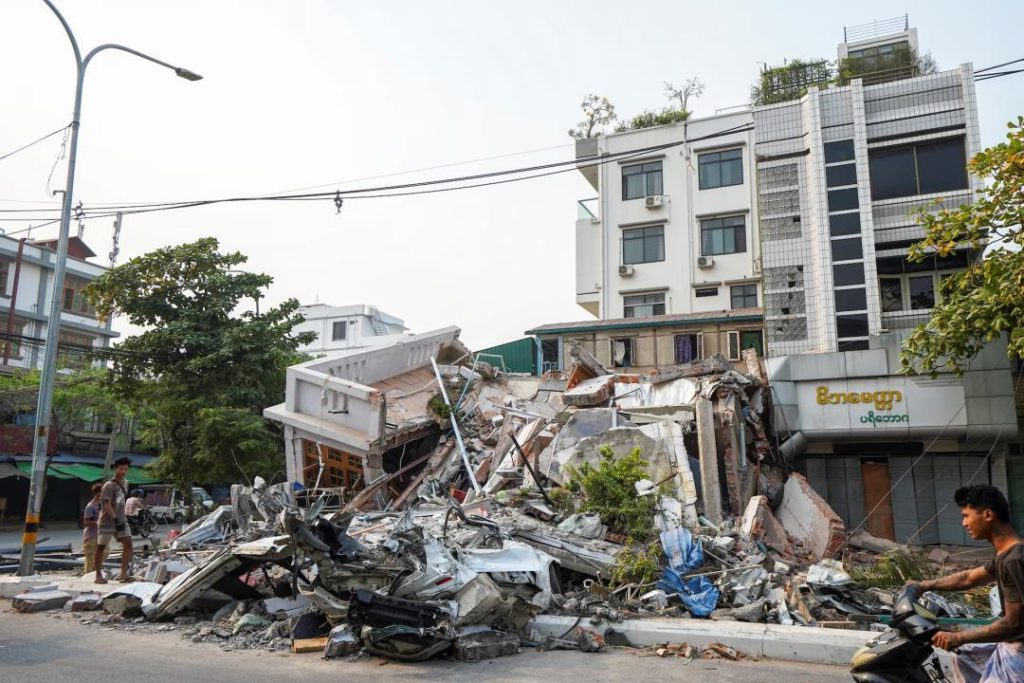
Death Toll Due to 7.7-Magnitude Myanmar Earthquake Breaches 1,700
A devastating 7.7-magnitude earthquake that struck Myanmar on Monday has taken a catastrophic toll on the country, with the death count breaching 1,700, according to the country’s ruling junta. The massive quake has also left over 3,400 people injured, and the Red Cross has described the devastation as the worst seen in Asia in more than 100 years.
The earthquake, which struck at around 5:20 am local time on Monday, was centered in the Magway region of central Myanmar and was felt as far away as the Indian states of Manipur and Nagaland. The powerful tremors caused widespread destruction, with thousands of buildings collapsed or severely damaged, leaving many people trapped under the rubble.
Rescue efforts have been ongoing since the earthquake struck, with teams of emergency responders and volunteers working tirelessly to search for survivors and provide aid to those affected. However, the scale of the destruction has made it a daunting task, with many areas still inaccessible due to the lack of infrastructure and communication networks.
The Myanmar military junta has deployed troops to the affected areas to assist with the rescue efforts, and international aid agencies have also begun to mobilize to provide support. The United Nations has pledged to provide humanitarian assistance, and several countries, including China, Japan, and South Korea, have offered to provide aid and support.
The Red Cross has described the devastation as “unprecedented” and “catastrophic,” with many communities left without access to basic necessities such as food, water, and shelter. The organization has launched an appeal for funds to support its response efforts, and has called for donations to help provide emergency assistance to those affected.
In addition to the devastating impact on Myanmar, the earthquake has also had a significant impact on neighboring Thailand. At least 76 construction workers are reportedly still missing following the collapse of an unfinished skyscraper in Bangkok, the country’s capital city. The building, which was under construction, collapsed just hours after the earthquake struck, and rescue efforts are ongoing to search for those trapped.
The collapse of the building has raised concerns about the safety of construction sites and buildings in Thailand, with many calling for stricter regulations and enforcement to prevent such tragedies from occurring in the future.
The Myanmar earthquake is the latest in a series of devastating natural disasters to strike the region in recent years. In 2015, a massive earthquake struck Nepal, killing over 8,000 people and leaving hundreds of thousands displaced. In 2018, a cyclone struck Myanmar, killing over 100 people and displacing thousands more.
The impact of natural disasters on communities can be devastating, causing widespread destruction and displacement, as well as long-term psychological trauma. It is essential that governments and international organizations work together to provide adequate support and assistance to those affected, and to implement measures to reduce the risk of such disasters in the future.
As the rescue efforts continue in Myanmar, the global community is coming together to offer support and assistance. The news of the devastating earthquake has sparked widespread outrage and sympathy, with many calling for aid and support to be provided to those affected.
In conclusion, the death toll due to the 7.7-magnitude Myanmar earthquake has breached 1,700, with many more injured and affected. The devastation is unprecedented, and it is essential that the global community comes together to provide support and assistance to those affected. As we mourn the loss of life and destruction caused by this disaster, we must also look to the future and work towards reducing the risk of such disasters occurring in the future.






